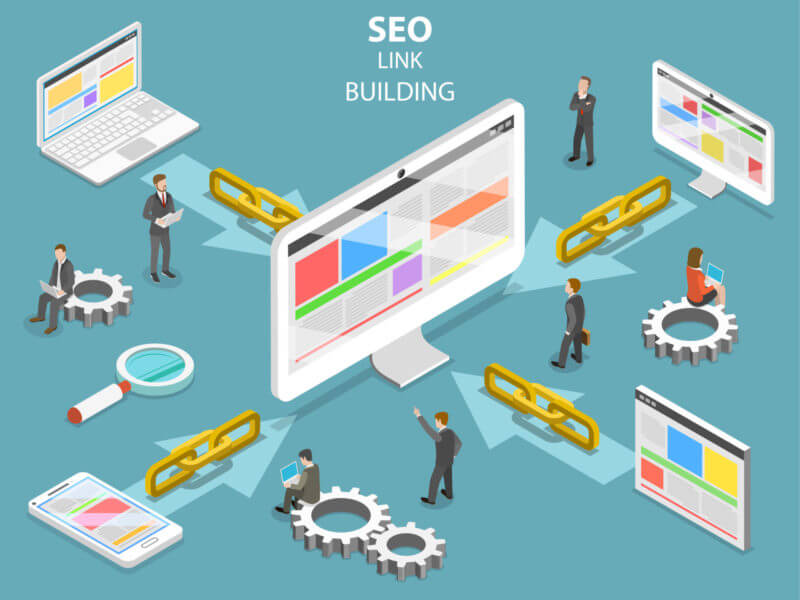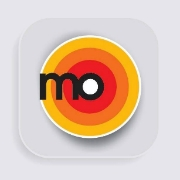Getting it done: how to overcome common link building blockers
Have a Glance
Link building is tough to begin with and made harder when company policies slow down the workflow. In particular, content-driven link building is hard because you're hoping the idea and execution you've come up with is strong enough to attract links.Ajit: +91 9820621021

In particular, content-driven link building is hard because you're hoping the idea and execution you've come up with is strong enough to attract links.
You may think you have the best idea in the world, executed in a stunning way via a great design, but if the person on the other end of your outreach email doesn't agree, your content can fail in spectacular style.
While hard, executing a good link-building campaign is not impossible. Today I want to talk about ways to identify and overcome what I call “blockers,” which are issues or situations that can stop you from getting things done. You can be the best agency in the world, but if you can't get things done, it's not going to count for anything.
The world needs to overcome everything! So, why to be behind in case of link building. Hence, we brought the Best Ways To Overcome Common Link Building Blockers. Building links is not an easy task and it gets more complex when company policies slow down the workflow of a site. As we all know that link building increases the brand awareness and are attracted with the help of content (good quality content) and Digital Marketing in India. Very often, we can say that content-driven link building is quite hard. Because the difference between idea you are hoping and execution you have come up with is strong enough to attract the links. Hence, before that, let's discuss its types in details and thereafter, we will go through the ways of overcoming the same. Thus, this is what we are elaborating here! Keep reading...
Types of Links
Links are the most important equipment for a website. They are one of the key points which helps to rank higher on SERP. Well, there are quite many off-page SEO techniques to raise the ranking, but here we will only go through the links, link types and the tips/ways to overcome the link building blockers. So, we can say that SEO (Search Engine Optimization) and links are connected to each other. Following are the six types of links; which are discussed below:-
Editorial Link
This type of link works without paying, exchanging and trading at SEO (Search Engine Optimization.) It just attracts the users by having the good content. However, these links are not provided by the website owner, they are owned and fetched by the copywriter. Very often, such links are quite good to make a profile stronger.
Resource Link
These links are very important for websites because they assign the value to the website. Such links are one way or two way. However, these links are also known as information links. In recent years quantity, quality and relevance have become the most important term for a website. Quite, they help the rater to count the rating of your website. Search engine measures the relevance of a site by comparing it with other sites. Links to all sites are examined by the search engine, which can increase the value of a site according to their links. Ranking of a site too depends on the content and linking strategies of the link on a site.
Acquired Link
A website owner can get such a link after the payment or distribution. This type of link is also known as organic links. Organic links are those hypertext links which are developed with or without exchanging the links. However, by such type of links the user feel content or entire website is more relevant. Very often, these types of the link may include the directory submission, advertising, and forum, etc.
Reciprocal Link
Reciprocal Link is the agreement between two sites, and its principle of work is according to guest posting. Generally, such links provide readers with instant access to related sites, or to share a partnership between the two sites. Further, the ways by which, this link increases the traffic of your website-are as follows: People will find your website by clicking the reciprocal link. Search engines encounter the number of links to your website (inter-linking) and also checks the hyperlinks that target your website.
Forum Signature Linking
This type of link is used to create a schema for websites. Forum communities are used for those who provide an outbound hyperlink in the signature of the member. This method is too fast so that the website can create an inbound link for SEO (Search Engine Optimization.)
Directory Link
Directory links are those links who can be stored in the website directories. Often, the website directories are the catalogs for online sites. But this time directories are used to store the websites information, its links, and much more. However, under directory submission website owners submit their sites to other websites, some of them are free and some are paid.
Minimize loss
At our agency, we don't lose our clients, but it does happen. That’s part of agency life. We try to minimize our losses as much as possible, but there are always going to be times when things don't work out. Sometimes you could have prevented it, sometimes there is nothing you could have done differently to save the project. So while I'm not going to claim to know all of the answers, I do want to share what I've experienced to be the most common link-building blockers.
I am also going to share an example of a project we lost because we didn't do a good job of identifying and overcoming the blockers I talk about below.
The principles below could easily apply to most types of projects, not just link building or search engine optimization (SEO) but general marketing projects, in Digital Marketing in India too. From experience, I've found the blockers outlined to be most prevalent and "deal breakers " on content-driven link-building projects.
For the sake of clarity, the link-building project mentioned here was content-driven and used items like guides, white papers and infographics to attract links.
Identify link-building blockers early
Every single project has things that get in the way of doing the job. It's important to find out what these “blockers” are as soon as possible. You'll still encounter unforeseen blockers, but when it comes to link building, there are a few common blockers that you should always ask about when you start a project.
The content-driven link-building process will be slightly different for every agency or client, but generally, it will include the following broad steps:
Each of these steps may require a signoff from multiple people, multiple times. Some people may need to be involved in every step, others just one step and others may only need final signoff at the very end. Therefore, it's important to map the potential blockers to each step so that your team knows two core things:
What blockers exist at each step.
How to factor these into the project plan if someone needs a certain amount of time to sign something off.
On the latter, this can slow down or mess up project plans very quickly. If a legal team needs two weeks to review your content, that's going to affect your timeline significantly.
The most common link blockers
In terms of what blockers exist along this process, here are a few of the most common ones.
The digital team. This is the team you're working with day-to-day and therefore least likely to give you unexpected surprises. Ultimately, this is the team that will be held accountable for the work you do and will have to sign off that they're happy with your work. The key here is to identify what their common concerns are. This is often done naturally over the course of a project.
Here are some common concerns and questions the digital team may have:
Will the content idea work? Will it attract links?
Will the inbound links be from high-quality websites or lower-tier sites?
Will the execution look good?
Can other teams within the company, such as social or public relations, use this content?
The legal or compliance team. This is most likely to be a potential blocker in larger organizations that have dedicated legal teams or external advisors whose job it is to make sure any content your client produces isn't putting them at any kind of legal risk.
They are not going to have the same concerns as the digital team. They probably won't care if your idea works or gets links. Their key concerns center around being sued for publishing a particular piece of content.
That may sound like scaremongering, but that's pretty much what it comes down to for them. Here are what their specific concerns are likely to be:
Do we have the rights to publish the content?
Is there any third-party copy, images or data where we need to provide attribution or payment?
Are we using any copyrighted material, such as logos or trademarked terms? If yes, do we have permission?
Are we making any statements or claims that could be challenged by third parties?
There could be more, depending on your industry. For example, if you're in a highly regulated industry such as insurance or healthcare, there are likely to be extra layers of checks on what you can and can't say.
The brand team. Again, this team is more likely to be a factor if you work in large organizations. If you're working with startups or small businesses, the extent of a brand team is likely to be the owner of the company or a C-level person of some kind. Either way, the principles below will hold true. Here’s what they may be concerned with:
If the content is written, does it adhere to our existing tone of voice?
Is the language written in the same way as the rest of the website?
If the content is visual, does it fit with existing color palettes and fonts?
Do images follow the same style as existing ones?
Is our logo used in the appropriate way?
The UX and design team. These teams will have some of the concerns that a brand team could have but are likely to keep a closer eye on the finer details of a design, as well as the general usability. I've sometimes worked with companies where the design team has accountability for brand guidelines and signoff, so it's possible they will cover this if there isn't a separate brand team. Assuming that they're a distinct team, they're likely to concern themselves with:
Responsiveness of a piece: Does it work well across devices and browsers?
Does the user experience match the rest of the site?
If someone moves from the content to the home page, will it feel like a different website?
Is the piece accessible to all users, such as partially sighted users?
Copywriters and blog teams. You may work with some clients who have their own content team, but perhaps the team focuses more on product pages, a blog or a knowledge center. This team focuses on content that is more visual, but they're still going to care about the copy you use and whether you're going to be publishing content within part of the content management system (CMS) they are responsible for. Their concerns or questions are likely to be:
A tone of voice. Does your copy follow their existing tone of voice and fit with the rest of the website?
Will any visual content "fit in " with content that has previously been published in the blog or other content sections?
What is the scheduled date of publication? Does it fit with the existing schedule or conflict with other planned content?
Is the topic of the content one that they are already planning to produce or have done before?
In-house public relations and outreach teams. Some larger clients have their own internal link-building and internal public relations (PR) teams that focus more on the traditional side of PR as opposed to content-led link building. They may still need to be kept in the loop on your work to avoid issues such as:
Content duplication. In-house PR and outreach teams are likely to have their own lists of topics and themes they are pursuing and they'll be keen to avoid duplication. They'll also want to steer you away from topics which may be controversial.
Outreach contacts. They will want to make sure they preserve any existing relationships they have with journalists, writers, bloggers and influencers and avoid duplication.
On the second point, this has become a little more difficult recently in Europe because of General Data Protection Regulation (GDPR) which now prevents clients and agencies openly sharing personally identifiable information with each other. Examples of this include journalists’ or bloggers’ names/email addresses/phone numbers etc. This makes it harder to collaborate so the approach we use at Aira (my agency) is to share contacts/planned outreach targets at the domain level.
Web development team. This could be an in-house team or an external agency you need to cross paths with if you are trying to upload interactive content onto a client's website. A few things to be aware of here are:
What are the limitations of the CMS that you're working with?
Outside of the CMS, are there any guidelines on how interactive content should be created? Examples here could include whether custom names are required for CSS elements or whether the server is Apache or IIS, which may change how you may build a piece of content.
Do the team work on a sprint cycle? If so, how long is it, and what's the process for adding work to it?
Is there a backlog of any kind that could delay content going live?
Is it possible to get limited file transfer protocol (FTP) access to a client website? Being given access to a specific subfolder could speed things up.
External agencies. You may be working alongside agencies who conduct similar work and will want to be kept in the loop on your activities. They may not have the power to "block " you as such, but it's certainly possible for your work to be slowed down if you don't have a good relationship with them.
That time we failed
I want to share an example of a company we lost because we didn't do a good job of identifying and overcoming some of the link-building blockers I talked about earlier. We’ll call the client account Company A.
We were hired to produce content that drove links, coverage and brand awareness. Company A had a lot of the technical and keyword fundamentals covered by their in-house team, so our work was more to check and validate their SEO roadmap, as opposed to writing it from scratch. As a result, we were able to get going pretty quickly with content strategy, production and outreach.
We had a number of departments to work with that included Editorial, Brand, Design and UX. We also had to work around the schedule of a development team that had a product roadmap to work through. This roadmap didn't include time to help us upload content and test and tweak it before outreach.
The multiple levels of signoff, feedback and development meant an article launch was often slowed down to the point of frustration, even though we understood the need for approval and knew the development team was busy. We planned to launch a content piece every four to six weeks, and instead, it was closer to ten to 12 weeks.
Not only was this frustrating, but it meant we couldn't build links because there was no content to link to! This meant when someone at Company A asked the question, "What is being done for us?,” the truthful answer would be "not much."
We felt paralyzed by the process, and everyone involved understood and shared many of our frustrations. Unfortunately, there wasn't a whole lot anyone at Company A could do about it given their link-building blockers. The project lasted about nine months before ending. Company A said they did not see a return on their investment, so our services were canceled.
Was the project salvageable?
Looking back, here’s what we could have done differently with Company A:
Suggested alternative methods for getting content uploaded and launched. Developers are very busy people with many responsibilities. We could have suggested some alternative methods for getting content launched.
Taken more time to understand Company A’s internal culture. Brand, editorial and copywriting departments had to sign off, which meant more time would be involved.
Used established assets instead of waiting for new content to be launched. Company A had a range of content assets already on the website which we could have picked up and used for outreach while we waited. This would have started to help move the needle on links and ultimately, organic traffic.
Take time to understand the link-building blockers you may be faced with so you can work around them, or at least budget for their inconvenience for a positive outcome.
Learn Digital Marketing Courses
By now, I believe, that you have a fair idea why Digital Marketing is important for pharma sector. Some pharma companies have not yet fully embraced the digital revolution and changing times, while others have. Well, you should understand that it doesn’t matter to the patients out there, the patients are increasingly expecting, and rightly so, and demanding the pharma and healthcare industry to engage themselves and provide end-to-end services.
The pharma companies that are aligned to changing times, and are using digital mediums, are also the ones reaping the benefits. Big prizes are waiting for those who can cut through all the digital noise and come-up with sustained competitive advantage using digital mediums. The others will also align soon or go out of business.
There are different ways to learn digital marketing. You can teach yourself using online material and tutorials, or you can Learn Digital Marketing from a Reputed Training Institute. These training institutes have highly experienced professionals and provide you focused and personalized training with lot of live assignments, and also provide you guidance for your placements. There are digital marketing courses specialized specifically for pharma sector.
So, go ahead, learn Digital Marketing and shine on!
Remember…
-Pharma must be in the conversation so to know how to develop better drugs.
-Digital marketing offers many ways to communicate with customers (HCPs and patients).
-Pharma must offer great content that interests customers and helps them do their jobs better. This type of content is easier to approve, less risky and leads to better long-term customer loyalty.

Digital Marketing Corporate Training
Corporate training has evolved rapidly in recent years. It is one of the most significant parts of its growth and long-term investment strategies. It helps to improve employees performance, moral and skills by concentrating on professional development. Corporate Training is the key to ensure development in all the spheres; so that the employees can aspire in this competetive world and bring success on their behalf. Through Corporate Training highest productivity can be achieved when the individual goals are integrated with the organisational goals.
The scope of digital marketing is growing day-by-day. Companies are also focusing on digital marketing. Providing a Corporate Training on digital marketing will help the emlpoyees to boost up their productivity in the organization. It does not restrict you to one specific job profile. Getting a digital marketing training in an organization will help you to get better salary as this is the most fascinating advantage of digital marketing. It will help in making suitable modification whenever necessary. Training in digital marketing helps in creating better understanding of the companies and the employees are able to achieve their professional goals.
Please Share.. if you Like
Digital Marketing: Corporate Training Ajit: +91 9820621021 moPharma Leading Digital Marketing Agency for Pharma SEO, SEM, SMO, SMM, eMail Marketing, etc. Esteem Happy Clients:
Hindusatan Unilever, Abbott, MSD, AZ, Lupin, GSK, Lodha, Mumbai Police, Siemens and many more...








Discuss about post